-
Posts
158 -
Joined
-
Last visited
-
Days Won
18
Content Type
Profiles
Forums
Downloads
Gallery
Posts posted by Benoit
-
-
I think it is not related to this tread. please start new tread.
Please be more specific when asking for support so we can help you.
Benoit
-
I wish so much to be in direct contact with NI team development... Or be part of the team that addresses the issues. there is some that are in the bug list since over 8 years and the work around is do not use LabVIEW use something else to do it... like .net issues per examples.
Is someone talk to them about Agile development?
Sometime new feature need to be postpone in order to fix the old sh*t that are blocking point.
Looks like the marketing has to much power.
Please be stable then add new feature that people ask... not the one that just look great and kill the CPU...
Just some though...
Benoit
-
Hi everyone,
I am struggling in one weird behaviors concerning .net in LabVIEW.
Why as the picture bellow show, I cannot select the method of compression/decompression?
In LabVIEW 2011 this method works as expected. It seems that the constructor changed since the old .net. but for some reason, I cannot decompress any string with any software I did with my LabVIEW 2017.
Anyone know how to do that or understand what is going on?
PLEASE!!! do not suggest me external tools. this is a requirements to use the native .net in Windows 10... Security reason... I cannot use external .dll and I have a s**t load of data in our database that cannot be accesses anymore. So I need to use the native .net.
Thanks everyone for your support.
Benoit
-
In some cases B is useful like said previously in case structure. especially when type def constant are used and over lap the error and other wire.
cosmetic, but code readability is not only cosmetic.
-
OK... but it's like using global variables... It's not very standard. and can be quite difficult to know where it comes from. If you put it in a sub vi, even this sub vi is doing nothing... I think it would be better.
-
-
go try this:
-
Great suggestion... I'll try something.
-
Are you new to electronics to? if not, do with labview the same way you will do with electronic component.
OR if i understand well, just create an array of element with the same dimension of your original sine wave. In this array add random value centered of not to 0. then add the two array and display it in graph to see the results.
Benoit
-
Convert string to bitmap.vi
This vi simply transform a bitmap string to LabVIEW image.
I used basic LabVIEW function that already exist in read BMP file.
-
Submitter
-
Submitted08/02/2018
-
Category
-
LabVIEW Version
-
-
GRBL 1.1
Hi everyone,
Since GRBL standard is open source, I decided to post my Library that I used in LabVIEW to interface a standard GRBL version 1.1 controller.
Not all GRBL function has been integrated, but this is a very good start.
Enjoy and let me know your comments.
Benoit
-
Submitter
-
Submitted07/26/2018
-
Category
-
LabVIEW Version
-
 1
1
-
-
I don't know if it's applying to you project, but in my case, I have different .exe with different responsibility that talk with each other trough VI server.
This allow me to be very modular and when I have an update, only the required module is recompiled.
Some process that are used for multiple other .exe, I load them as service in Windows.
Just saying... that could be useful

Benoit
-
For the original post,
Instead of doing a mass compile on the huge project, try to do object by object. I have a feeling that only one object is causing issue for you.
Also, are you trying to do that on a new PC or on the upgraded PC that still have the old LabVIEW version?
In my case, It happened to me because of a .dll. External code some times creates problem.
Benoit
-
Well... it's my design that I did for a company... Cannot sell it... but my value is high.

Benoit
-
For my part, I hate TS for the license cost and for it's advantage that is an inconvenient for me. TS is so capable to integrate anything that it becomes not user friendly. The knowledge ramp is quite hard. Doing things in parallel is not intuitive and if you want a good GUI for your operator that is multiple language... GOOD LUCK. In a manufacture context, time and clarity of instruction counts.
I create my own test framework that integrate database, debug tools, instrument command spy and overpass functionality. Everything has a "secret" backdoor to connect to the tester to see what's going on. (I
 VI server) I developed a HAL "Hardware abstraction layer" level that allow the technician to change any instrument in a matter of minutes and this is 100% transparent for any test sequence that runs. Per example I support over 15 different power supply (serial, GPIB and USB). (plug it and play
VI server) I developed a HAL "Hardware abstraction layer" level that allow the technician to change any instrument in a matter of minutes and this is 100% transparent for any test sequence that runs. Per example I support over 15 different power supply (serial, GPIB and USB). (plug it and play ) I also integrated Domain login capability and so much more. Did I said that it support batch mode, single mode and asynchronous mode for unlimited test position as well as debug step by step?
) I also integrated Domain login capability and so much more. Did I said that it support batch mode, single mode and asynchronous mode for unlimited test position as well as debug step by step?
Finally, developing a test sequence with medium complexity (CAN, SPI, I2C, Ethernet, ARINC,+ instrument power supply switch, DAQ, Oscilloscope, camera (bar-code and vision inspection) and more, about 250 measurements take less than a week including deployment and validation. TS cannot offer that.
In other words, if you want all those functionality in TestStand, you need to develop them outside TestStand. Training someone on older code made in TestStand is way too long. So a huge license cost just to execute test step no thanks not for me.
By the way... I'm working for an important electronic manufacturer... High volume!!! No TestStand and happy about it.
-
1-Wire.zip
This tool-set gives access to all the 1-wire TMEX functionality.
I was able to access 1-wire memory with this library.
It has all the basic VI to allow communication with any 1-wire device on the market.
It needs to be used in a project so the selection of the .dll 64 bit or 32 bit is done automatically.
It works with the usb and the serial 1-wire adapter.
-
Submitter
-
Submitted06/01/2018
-
Category
-
LabVIEW Version
-
 1
1
-
-
55 easily distinguishable color.vi
This is the only way I found how to have a bunch of color that are unique and easily distinguishable. The maximum I saw in the web was about 26. This one offer 55 of them without gray tone. You can modify this VI to support gray tone as well and goes up to 60 colors.
-
Submitter
-
Submitted05/30/2018
-
Category
-
LabVIEW Version
-
-
MCP2221A library
There it is.
The complete library for the MCP2221A. I2c adapter, I/O in a single IC. I love that one.
Let me know if any bug is found.
I try to make that library as much convenient as possible to use. Two version available 32 bit and 64 bit. little note: to open by serial number, the enumeration need to be activated on the device first. (open by index, enable the enumeration) It needs to be done only once in the life time of the device.
PLEASE do not take ownership of this work since it is not yours. You have it for free, but the credit is still mine... I spent many hours of my life to make it works.
-
Submitter
-
Submitted05/29/2018
-
Category
-
LabVIEW Version2017
-
License TypeBSD (Most common)
-
-
It's coming very soon.
I am completing the integration phase this week, therefore it will be tested.
Only the SPI version not validated, but it should work.
Give me one more week.
-
Think 32 bit vs 64 bit.
.net will always use the correct architecture. Custom library that has been developed externally, can create a security breach as well.... .dll .ocx....
Native .net that you code yourself would be must trustworthy. But be aware that you need to make sure that the .net version used will always be compatible with the latest .net updates... sometimes it creates issues. this is likely less possible with external code if they are not relying on interpreter (java .net C++ or python.)
Another case would be licensing. When you use someone else code, be sure the licensing allow you to use it in your situation.
-
A wrapper will give him the same situation and create another unnecessary layer.
Did you know that a Cluster is what you are looking for? in your case, it will be two cluster into another one.
You can create your own header file (.h) and import your .dll into LabVIEW. That would be much better solution
Note that the UINT is a separate parameter.
-
Of course it is possible. National vision library will be helpful in this case. if you do not want to pay extra$$$ per station deployed, you can use OpenCV and create your own wrapper.
-
Try it by yourself. it's depend of your adapter. This VI use the friendly name that is usually a copy of what is seen in the DEVICE MANAGER.
-
Indeed, if you never connect the cable, it will crash.
I have now move away from ftdi. I found a much better solution.
Microchip MCP2221A Also a version for SPI is available.
Amazing IC with a lot more capability for a fraction of the price. We develop our own PCB to interface it and it still become cheaper that the cable from FTDI.
-
 1
1
-





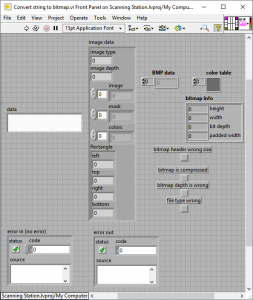
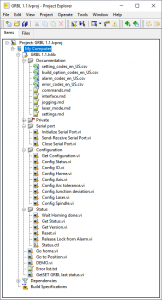
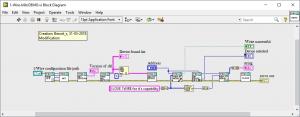
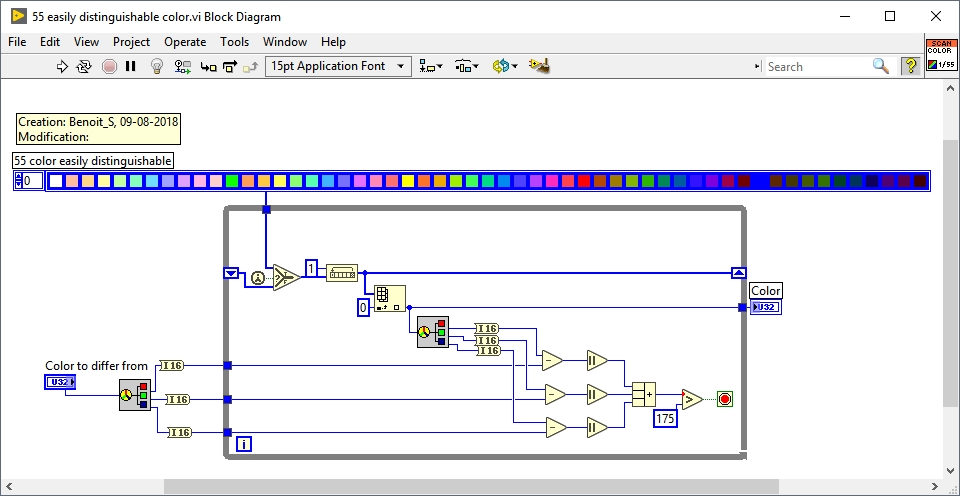
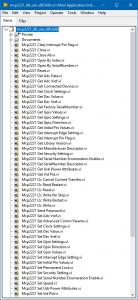
LabVIEW 2017 Editing Issues
in Development Environment (IDE)
Posted
Dear Jon,
You were talking about the bug tracking. In deed, it would be very helpful for us, developers that makes promises to our boss and customer, to know when the bug are planned to be resolved. Per example the bug 493662 concerning the .net is causing problem to a lot of us. Listing a work around to use external .dll is a killer for LabVIEW reputation. and this bug is there since 2014... I personally believe that new features should be delayed till all the bug are fixed. All LabVIEW developer will be so happy to not encounter bugs that kills their planning.
So please fight fur us and represent us in front of NI to push them the importance to release a version of LabVIEW without bug.
Benoit